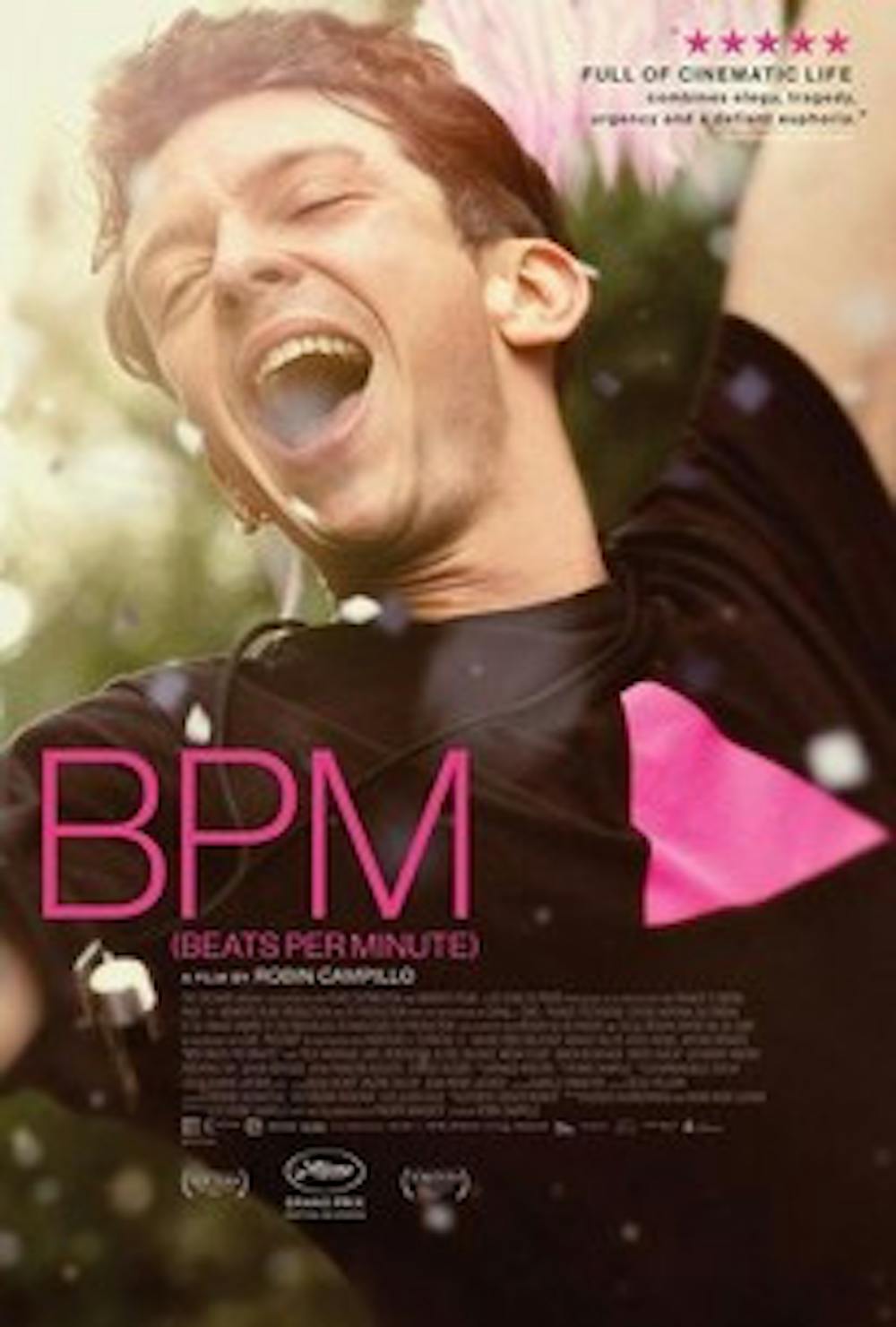Their slogans are catchy, jeans are bleached and their health is progressively deteriorating. Robin Campillo’s award-winning 2017 movie “Beats Per Minute” (“120 Battements Par Minute”) follows the Parisian activist group Act Up in their battle against HIV/AIDS in the 1990s. The screening was co-sponsored by the French department as part of the Hirschfield International Series.
The story begins following activist Sean Dalamazo’s (Nahuel Pérez Biscayart) difficult personal struggle with the disease as he falls in love with new member Nathan (Arnaud Valois).
We are introduced to Act Up at their weekly meeting in a lecture hall and are accompanied by Fabien’s (Jean-François Auguste) forceful words of advice: regardless of your true status, as an activist you have to now get used to being seen as HIV-positive. What follows is a series of awkward protest scenes, bass-driven parties with bizarre biological animations and a lot of medical jargon. Though somewhat quirky, Campillo’s portrayal of Act Up is oddly refreshing: it is not a dumbed-down, sanitized and perfumed version of social movements. Instead we are allowed to experience the group and their messiness in first person.
Despite taking place almost three decades ago, the events of the film feel contemporary. Were it not for Thibault’s (Antoine Reinartz) Gameboy in the hospital and the lack of laptops in the meeting room, the film could easily be set in 2018. The group’s passionate discussions about the inclusion of marginalized groups in their work and their constant struggle with corporate representatives bear a striking resemblance to issues which continue to color social activism as we know it today. As the group storms a high school to distribute condoms and flyers, the headmaster exhibits the same conservative attitude towards students’ sexuality which we still see in American sexual education today. Whether that says something about the stagnancy of Western social development can be debated.
Yet “BPM” is not all protest and debate. Judging by the number of people who were shrinking in their seats, the film’s boldest moments are found in its sex scenes. Biscayart and Valois’ captivating chemistry gets to shine as the camera appears to glide over their skin. With every vertebra and skin crease on display, the audience almost feels like an intruder. As Sean reluctantly tells Nathan about an affair with a teacher that led to his infection and the lesions on his skin, the heaviness of the atmosphere in the auditorium was palpable.
The film also proves its relevance to current debates by showing physical intimacy in a rather progressive way: sex in “BPM” is communicative and light-hearted throughout, all while never losing its spark. Plus: points for the consistent emphasis on protection — just please do not rip condoms open with your teeth like Sean does.
Although the stories presented by individual characters are generally insightful and well-developed, supporters of the Bechdel test may find themselves getting frustrated.
In its treatment of gay and lesbian women as accessories, “BPM” reflects the tendency of queer popular culture to pay disproportionate amounts of attention to gay men. Campillo feels entitled to throw around the derogatory word “dyke” for its shock factor yet gives little to no space for the development of female characters with strong presences like Sophie (Adèle Haenel), Eva (Aloïse Sauvage) and Hélène (Catherine Vinatier). While even characters with significantly less screen time, such as Germain (Médhi Touré) and Markus (Simon Guélat), get to vocalize their personal experiences with HIV, we are left to speculate what might have led the women to Act Up.
As the majority of the film is spent closely following Sean and Nathan’s relationship, some may say that this observation is irrelevant. Yet such a view fundamentally misunderstands the film’s function. “BPM” is at its core a political film and thus deserves to be discussed in political terms. Hence, its downfalls in creating an accurate portrayal are important: the HIV/AIDS epidemic may have primarily affected men, yet women certainly were (and are) not immune to it. In its current form, “BPM” remains complicit in reproducing misconceptions about the insignificance of women in the movement against HIV. Even a slight expansion of this angle could have given the film a dimension which few have explored.
As I walked out of the Dana Auditorium amidst viewers who, like me, tried hard to rub the marks of the film’s last half hour off their eyes, I found myself hyper-aware of my surroundings. Arnaud Rebotini’s soundscape and Campillo’s intricate cinematography force your mind to recalibrate.
Sean may have been joking as he described the vividness which his HIV-status added to his life, but to the viewer that illusion is very much present. In its essence, “BPM” is what one would want a film about a personal struggle like AIDS to be. It is tender, it is unapologetic, it is raw and most definitely worth your time.
Reel Critic: Beats Per Minute

COURTESY PHOTO
"BPM" discusses intimacy and advocacy in 1990s France.
"BPM" discusses intimacy and advocacy in 1990s France.
Comments



